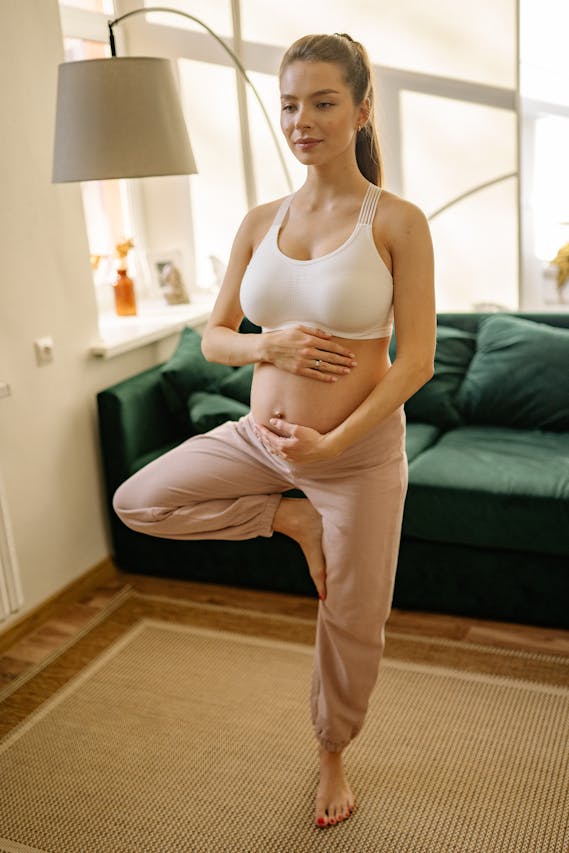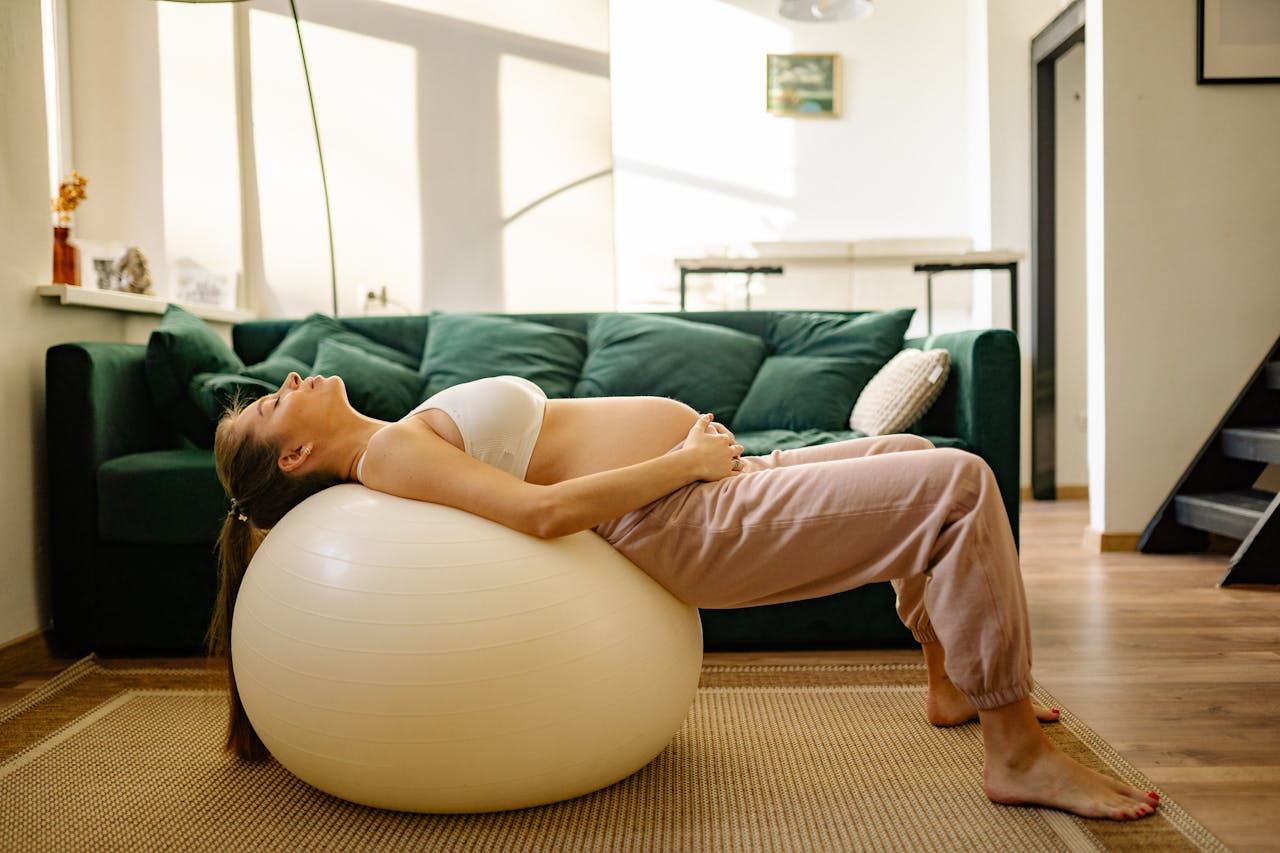Discover the Yoga Secrets Every Mom-to-Be Needs for a Strong, Pain-Free Pregnancy
You’re glowing, you’re growing, and suddenly… you’re leaking a little when you laugh. Or maybe your lower back aches constantly, or intimacy feels uncomfortable.
Sound familiar? You’re not alone. As a pelvic floor dearmoring practitioner, I’ve seen hundreds of clients navigate pregnancy with these exact struggles. But here’s the good news: your pelvic floor doesn’t have to suffer just because you’re pregnant.
In fact, pregnancy can be the perfect time to strengthen, balance, and connect with this crucial muscle group-and yoga is your secret weapon. Forget the outdated advice about endless Kegels. Let’s talk about how prenatal yoga can help you build a pelvic floor that’s both strong and supple, so you can enjoy a more comfortable pregnancy, prepare for labor, and recover faster postpartum.
Why Your Pelvic Floor Matters More Than Ever During Pregnancy
The Pelvic Floor: Your Body’s Unsung Hero
Your pelvic floor is like a hammock of muscles supporting your bladder, uterus, and bowels. During pregnancy, these muscles face a triple threat:
- Weight: Your growing baby adds pressure.
- Hormones: Relaxin loosens ligaments and joints, which can destabilize the pelvis.
- Posture: A shifting center of gravity strains your lower back and pelvis.
Left unchecked, this can lead to leaks, pelvic pain, or even prolapse. But here’s the kicker: over-tightening your pelvic floor (hello, stress and poor posture) can be just as problematic as weakness. That’s where yoga shines-it teaches you to balance strength and relaxation.
How Prenatal Yoga Transforms Pelvic Floor Health
The Science-Backed Benefits
A 2024 study published in PubMed found that pregnant women who practiced yoga saw a 24% improvement in pelvic floor function compared to those who didn’t. Here’s why:
1. Strengthens Without Strain
Yoga poses like Malasana (Garland Pose) and Bridge Pose engage the pelvic floor dynamically, unlike static Kegels. This builds endurance for labor and daily life.
2. Relieves Tension and Pain
Hip-opening poses like Baddha Konasana (Butterfly) and Happy Baby release tightness in the pelvic muscles and hips, easing back pain and improving mobility.
3. Improves Posture and Breathing
Poor posture (think: swayback from a growing belly) strains the pelvic floor. Yoga emphasizes alignment and diaphragmatic breathing, which reduces intra-abdominal pressure.
4. Prepares for Labor
Learning to relax the pelvic floor through poses like Cat-Cow can help you “open up” during delivery, while breathwork teaches you to stay calm under pressure.
5 Must-Try Yoga Poses for Pelvic Floor Health
1. Malasana (Garland Pose)
Why it works: Strengthens the pelvic floor, opens hips, and mimics the squatting position often used in labor.
How to do it:
-
Stand with feet wider than hip-width, toes turned slightly out.
-
Lower into a deep squat, keeping heels grounded (use a folded towel under heels if needed).
-
Press elbows against inner knees to gently open hips.
-
Hold for 30 seconds, breathing deeply into your belly.
Client story: Maria, 32 weeks pregnant, used this pose daily. “I stopped feeling that ‘heavy’ sensation in my pelvis-and my midwife noticed how easily I could move during labor!”
2. Baddha Konasana (Butterfly Pose)
Why it works: Stretches inner thighs and pelvic floor, improving circulation and reducing sciatic pain.
How to do it:
-
Sit on the floor, soles of feet together, knees dropped outward.
-
Hold your feet and sit tall, lengthening your spine.
-
Gently flap knees up and down like butterfly wings for 1–2 minutes.
3. Cat-Cow Flow
Why it works: Mobilizes the spine and teaches pelvic floor relaxation.
How to do it:
-
Start on hands and knees, wrists under shoulders, knees under hips.
-
Inhale, arch your back (Cow Pose), lifting your tailbone and relaxing the pelvic floor.
-
Exhale, round your spine (Cat Pose), tucking your tailbone and gently engaging the pelvic floor.
-
Repeat for 2–3 minutes.
4. Supported Bridge Pose
Why it works: Strengthens glutes and pelvic floor while relieving lower back tension.
How to do it:
-
Lie on your back with knees bent, feet hip-width apart.
-
Lift your hips and slide a yoga block or pillow under your sacrum.
-
Relax here for 2–3 minutes, focusing on deep belly breaths.
5. Happy Baby Pose
Why it works: Releases tension in the hips and pelvic floor, promoting relaxation.
How to do it:
-
Lie on your back, grab the outsides of your feet, and pull knees toward armpits.
-
Rock gently side to side, breathing into any tight spots.
- For a deeper explanation of Happy Baby Pose, click here: Happy Baby Pose
Common Mistakes to Avoid
1. Overdoing Kegels
Tight pelvic floor muscles can’t contract effectively. If you’re already holding tension (common in desk workers or stressed moms-to-be), prioritize relaxation first.
2. Ignoring Alignment
Slouching or arching your back strains the pelvic floor. Use mirrors or a partner to check your form in poses.
3. Holding Your Breath
Breath = power. Inhale to relax the pelvic floor, exhale to gently engage.
Sample Prenatal Yoga Routine for Pelvic Floor Health
| Time | Pose | Focus |
|---|---|---|
| 5 min | Cat-Cow Flow | Warm-up, spinal mobility |
| 3 min | Malasana | Strength & hip opening |
| 3 min | Butterfly Pose | Stretching & relaxation |
| 4 min | Supported Bridge | Strengthening & lower back relief |
| 5 min | Happy Baby + Deep Breathing | Release tension & mindfulness |
Frequency: 3–4 times per week.
Real-Life Success Stories
Sarah’s Journey: From Pain to Empowerment
At 28 weeks, Sarah struggled with pelvic girdle pain and anxiety about labor. After integrating yoga into her routine:
-
By 34 weeks: Her pain reduced by 70%.
-
During labor: She used breathwork from her practice to stay calm.
-
Postpartum: She regained pelvic strength faster than after her first pregnancy.
FAQs (Voice Search Optimized)
“Can yoga fix pelvic floor issues during pregnancy?”
Yes! Studies show yoga improves pelvic floor function by balancing strength and flexibility.
“What’s the best yoga pose for pregnancy pelvic pain?”
Try Cat-Cow and Happy Baby Pose to release tension.
“How often should I do prenatal yoga for my pelvic floor?”
Aim for 3–4 sessions weekly, even 10–15 minutes daily makes a difference.
Ready to Transform Your Pelvic Floor?
Your pelvic floor doesn’t have to be a source of fear or discomfort. With the right yoga practice, you can build resilience, ease pain, and step into motherhood feeling strong and empowered. Roll out your mat tonight and try just one pose-your future self (and your pelvic floor) will thank you.
PHOTO CREDIT: Beautiful pregnancy yoga photos by Yan Krukau – krukphoto.com






